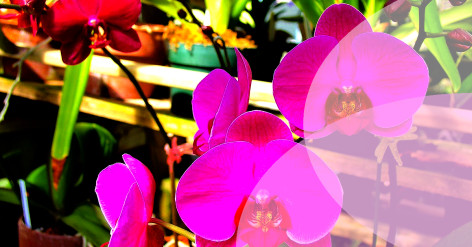Best way to grow cherries

"Cultivation or Procurement: Choose your Champion"
Did you ever wonder if those deliciously sweet and slightly tart cherries hanging in the supermarket could be easily sown in your backyard? Well, the answer is a resounding 'YES'! Increasingly, amateur gardeners and horticulture hobbyists are embracing the joy of growing their own cherries at home. A fusion of practical and economic benefits make cherry planting a rewarding nonpareil. Follow along as we unravel the secrets to growing the perfect cherry in your backyard.
"Masterclass on Planting Cherry Seeds: Getting your hands Dirty"
To start, one needs to decide on either growing a cherry tree from scratch i.e., from seed or by planting a young tree (also known as a sapling). While cultivating seeds gives you the joy of nurturing your plantation from inception, procuring a young cherry tree from a nursery expedites the fruit-bearing process. To simplify your decision process, This Old House provides a well-detailed guide on choosing between cultivating seeds and planting saplings.
"Secrets of Sapling Success: Speeding up the Process"

Related articles
Should you choose to go with the seed route, remember that planting cherry seeds requires patience. Firstly, gather seeds from a ripe cherry. However, do not let the seeds dry out, as they lose viability quickly. Then, refrigerate these 'wet' seeds in a plastic bag filled with moist vermiculite or peat moss. The process, known as stratification, assists in breaking the seed dormancy.
After 10 to 12 weeks of stratification, remove the seeds and plant them in pots filled with well-drained soil. Situate the pots in a sunny area, ensuring the soil is constantly moist. The cherry seeds should germinate within a few weeks.
"Cherry on Top: Cultivation Tips and Tricks"
The benefit of choosing a sapling from a trusty local nursery is the speed in reaching fruit-bearing maturity. Saplings are usually two or three years old and would bear fruit in another two to three years. Choose saplings that look healthy, preferably with a strong central leader (the main vertical stem).
Once you've chosen your young tree, prepare a hole twice as wide and as deep as the root ball. Position the tree so that the base of the trunk is level with or slightly above the ground surface. Finally, backfill the hole with a mix of garden soil and compost and water it well. Detailed information about the planting process can be found on websites like Gardenersâ World.
"Fruits of Labor: A Reward like No Other"
Cherry trees enjoy full sun and require a well-drained, fertile soil. Remember to add mulch around the tree's base to retain moisture and suppress weeds. While initially, frequent watering is essential, over time, cherry trees can tolerate a certain amount of drought.
Moreover, for the first few years, prune the tree during late winter to encourage a strong structure and remove any diseased or damaged wood. Finally, in terms of diseases and pests, cherries are prone to fungal infections and insects. Using an eco-friendly pesticide can abate this issue to an extent.
With the right techniques and patience, within a few years, you'll be enjoying your own homegrown cherries. So why wait? Cultivate your green thumb and get cherry planting today!
Properly planting and maintaining a cherry tree can be mildly challenging but the reward if enormously gratifying. Nothing compares to the satisfying burst of flavor from your homegrown cherries. Whether you're an experienced gardener or just starting your journey, cherry growing promises a sweet return on investment. Happy planting!





